Configure vSAN 8 Express Storage Architecture ESA
The new VMware vSAN 8 Express Storage Architecture is one of the most revolutionary advancements in vSAN technology since vSAN 6.2 came along. The new vSAN Express Storage architecture ESA provides a radically new architecture allowing businesses to realize the potential of modern hardware configurations fully. Let’s look at how you configure vSAN 8 Express Storage Architecture and take advantage of its new capabilities and architecture.
What is vSAN 8 Express Storage Architecture ESA?
The new vSAN 8, the latest version, Express Storage Architecture is a new way to configure vSAN storage to take advantage of new advancements in storage architecture and new hardware capabilities. When the first vSAN was introduced, legacy spinning disks were still the norm and flash was a high-priced commodity that many enterprise organizations simply didn’t have the budget for in their data center.
Take a look at my video showing how to enable the new Express Storage Architecture in vSAN 8:
View my other vSphere and vSAN 8 blog posts here:
- VMware ESXi 8.0 New Host Client 2 and Logo
- ESXi 8.0 Upgrade in three ways
- VMware vSphere 8 – Download links for ESXi 8 and vCenter Server 8
- vSAN 8 Original Storage Architecture vs Express Storage Architecture differences
Legacy Original storage architecture for traditional spinning disks
With the introduction of vSAN 8, VMware realized that vSAN architecture up to this point was really built for legacy, traditional storage architectures that utilized spinning disks or hybrid configurations with a mix of flash devices and spinning disk hard drives.
You can see this in the original storage architecture (vSAN OSA) vSAN disk groups. A traditional vSAN disk group in the original storage architecture contains storage devices, including cache devices and capacity devices that allow data to be written very quickly to the flash devices on the cache tier and then offloaded to the capacity tier when the write had occurred and was acknowledged in the vSAN cluster.
Storage architecture now comes standard with all-flash devices
However, as you look at where storage architecture has come in 2022 and over the past decade, when you fast forward to now, flash devices are now the norm and spinning disks are no longer the sweet spot in server configurations. In fact, in many cases, spinning disks are now more costly and undesirable from a fiscal standpoint. It underscores the fact that a revamp of the vSAN storage architecture was needed to fully realize the potential of modern hardware and storage architecture found in today’s servers.
Advantages of the Express Storage Architecture
The advantages of the new vSAN ESA architecture are many and are a major change from the original storage architecture. First and foremost, you get a drastically simplified storage device provisioning experience when configuring your vSAN datastore, all exposed from the normal vSphere Client as part of vCenter Server.
Single-tier storage architecture
The Express Storage Architecture provides a single-tier architecture where you no longer have to have cache and capacity devices, providing dramatic improvements. With flash devices being the norm, you simply configure the server with all flash devices local disks and then use vSAN Express Storage Architecture to configure the software-defined storage architecture with the vSAN ESA and with the same storage policy-based management you get with previous vSAN versions.
The new vSAN ESA still comes with a capacity leg and performance leg. It also introduces the new concept of storage pools instead of disk groups. Storage pools are the concept that aggregates all devices into the same storage architecture without the various tiers of storage.
Adaptive network traffic shaping
Another new feature with VMware vSAN 8 and the Express Storage Architecture is adaptive network traffic shaping. With the new capabilities of vSAN 8 Express Storage Architecture, VMware can push the limits of what the network can handle, especially using modern NVMe-based TLC flash devices processing data at extremely high rates. The bottleneck can easily shift to the network.
The new vSAN ESA helps with this as it includes adaptive network traffic shaping for vSAN I/O. It kicks in when network contention occurs. At that point, vSAN will properly prioritize VM I/O over resynchronization activity. It helps to ensure the VM network connectivity and traffic continues to deliver consistent performance regardless of the resynchronization operation.
Highly resilient storage architecture
The storage provided by vSAN is highly resilient storage. Without the cache tier, you no longer have to worry about losing a cache device and then losing your entire disk group. Capacity and cache functionality are handled by all devices in the server so that no one disk is configured as the single cache device for the disk group.
Enabled by the same vCenter Server
You can still use the original storage architecture OSA and the express storage architecture ESA and enable both technologies from the same vCenter Server. VMware vSAN 8.0 Express Storage Architecture introduces something called the Log structured file system that provides exponentially better performance from the storage layer to store metadata on vSAN shared storage.
VMware has also moved around things like compression and encryption much higher in the stack so it is more efficiently processed when compared to the vSAN original storage architecture and has minimal performance impact when enabled in the vSAN stack.
You get better compression ratios and erasure coding capabilities when running virtual machines with vSAN Express Storage Architecture. It maximizes the storage capacity with new erasure coding capabilities that allow you to run a 3-node cluster with RAID 5 erasure coding. It is also an adaptive storage architecture and can change the erasure coding level based on the number of failures. It provides an intelligent storage architecture that takes much of this burden from the vSphere admin from worrying about space efficiency and other concerns in vSAN clusters.
How to configure vSAN 8 Express Storage Architecture
Configuring the new Express Storage Architecture is very similar to enabling the vSAN Original Storage Architecture in previous versions of vSAN. Here I am creating an ESA configuration on a new cluster in my lab environment.
You get the same wizardized approach to configuring the flexible architecture of Express Storage Architecture as we did with the Original storage architecture.
It is just a toggle button on the vSAN data structure creation wizard. If you untoggle the vSAN ESA toggle, you are choosing to configure the vSAN OSA configuration instead to house your virtual machine storage.
Choose if you want to turn on encryption at rest and in transit.
On the claim disks screen, you can select the disks you want to include in the Express STorage Architecture configuration of your new vSAN datastore. You will notice below I am running the wizard in a nested ESXi environment, so you will see the warnings the drives are not certified. Also, when this is the case, you won’t be able to slide the toggle over for I want vSAN to manage the drives. This enables a vSAN-managed disk claim but can only be enabled if there are vSAN ESA-compatible disks on the ESXi hosts.
Below, we are claiming specific disks on each host.
On the Create fault domains screen, you can choose if you want to create separate fault domains or keep the defaults here.
At the Review screen, we are ready to create the new vSAN Express Storage Architecture configuration with the storage devices added to vSAN ESA new architecture with new functionality.
The vSAN configuration will begin in vCenter Server for the new Express Storage Architecture at the cluster level.
After the process completes to finish the configuration, you can navigate to the cluster level > Configure > vSAN > Disk Management, and you will see your disks added.
At this point, you have successfully configured the vSAN Express Storage Architecture in your environment! So cool to see how easy it is to benefit from the new architecture using the wizardized approach.
Wrapping Up
The new vSAN 8 Express Storage Architecture is an extremely exciting new architecture allowing customers to benefit fully from modern hardware and allows companies to achieve new levels of performance, efficiency, and scalability.
Check out the official VMware vSAN 8.0 resource here: What’s New with vSAN 8 | HCI | VMware


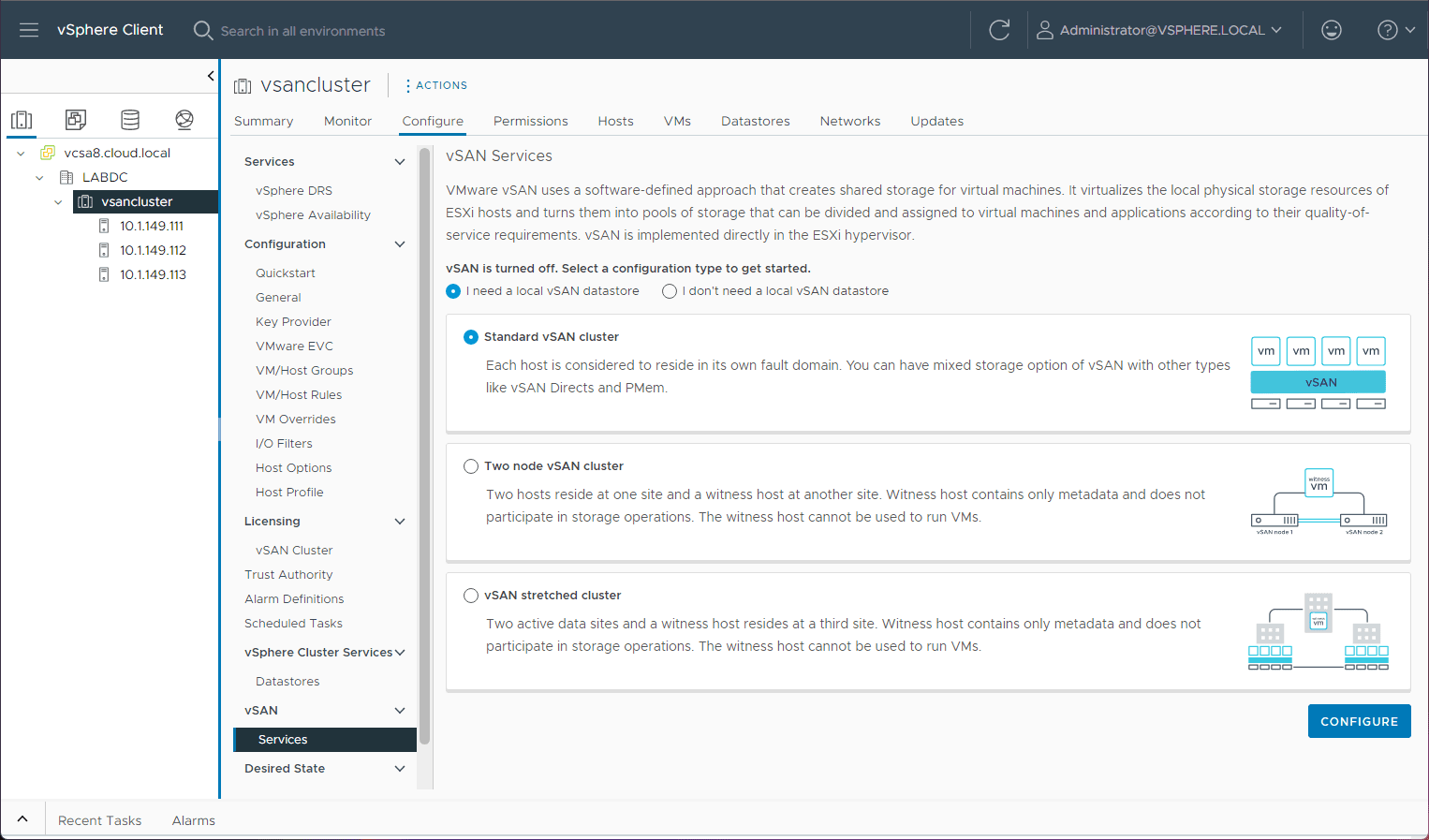
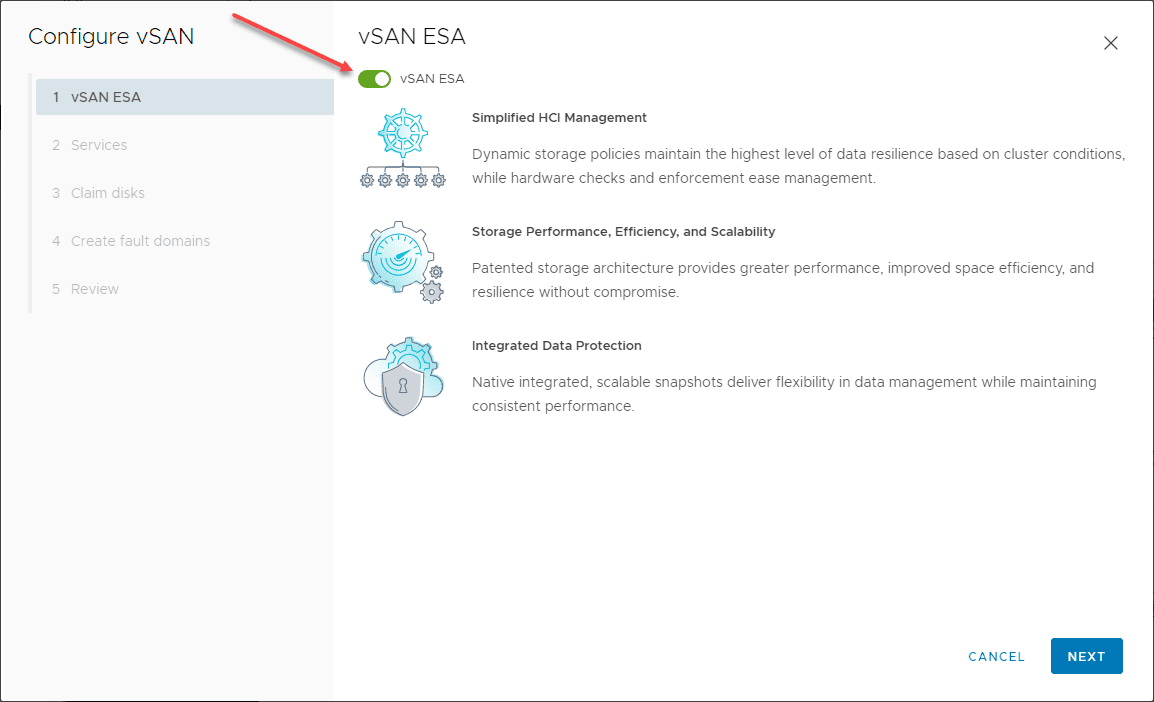
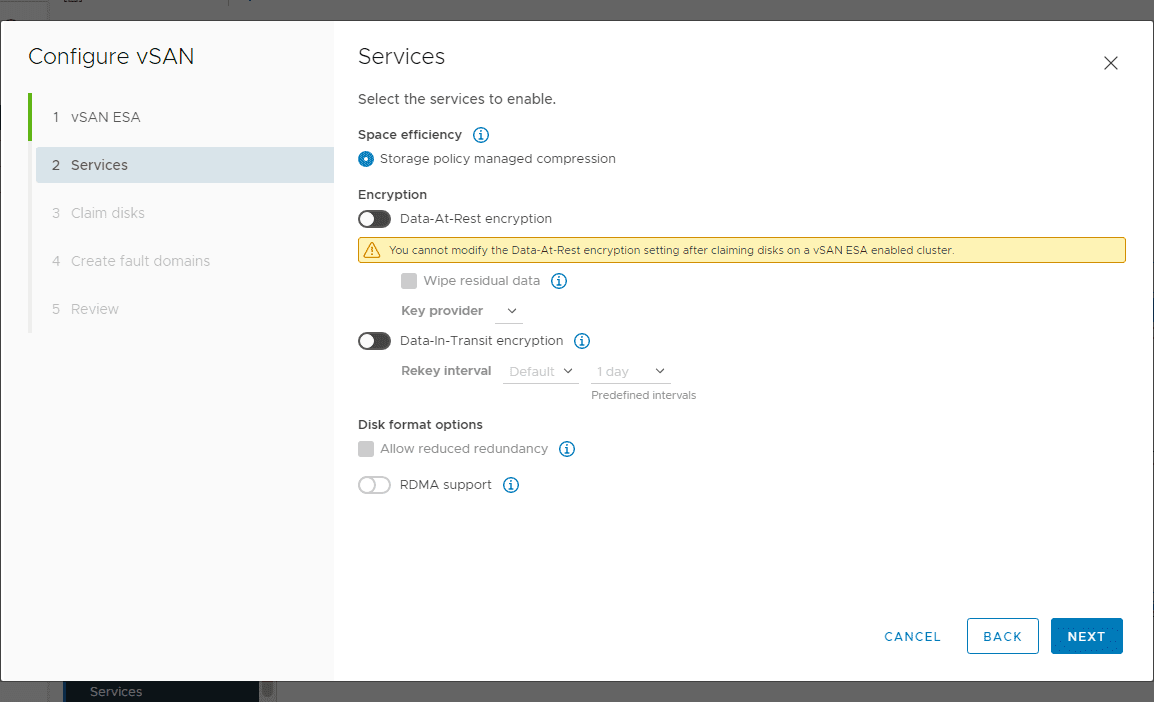
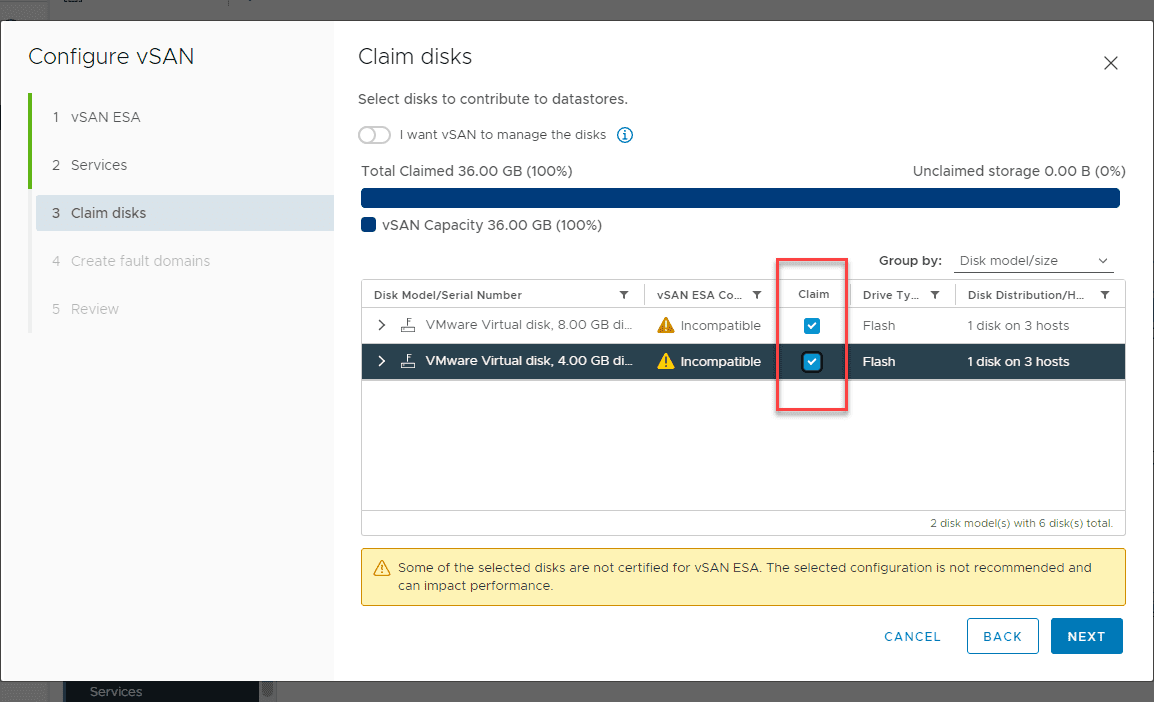
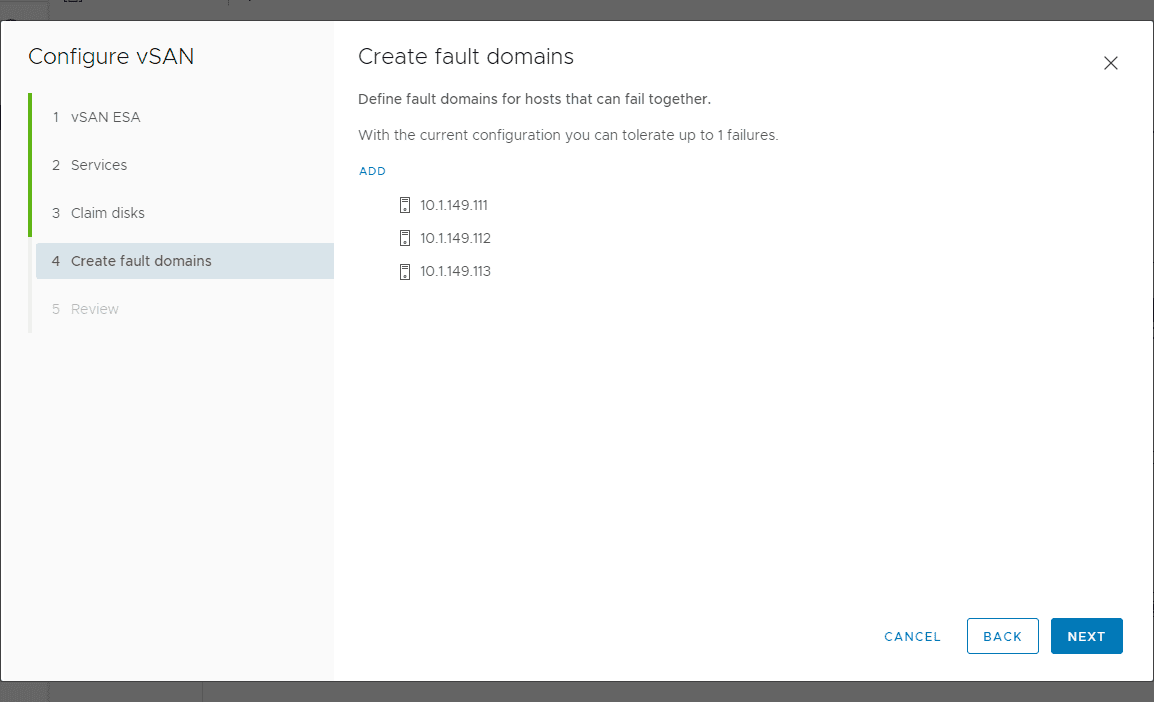

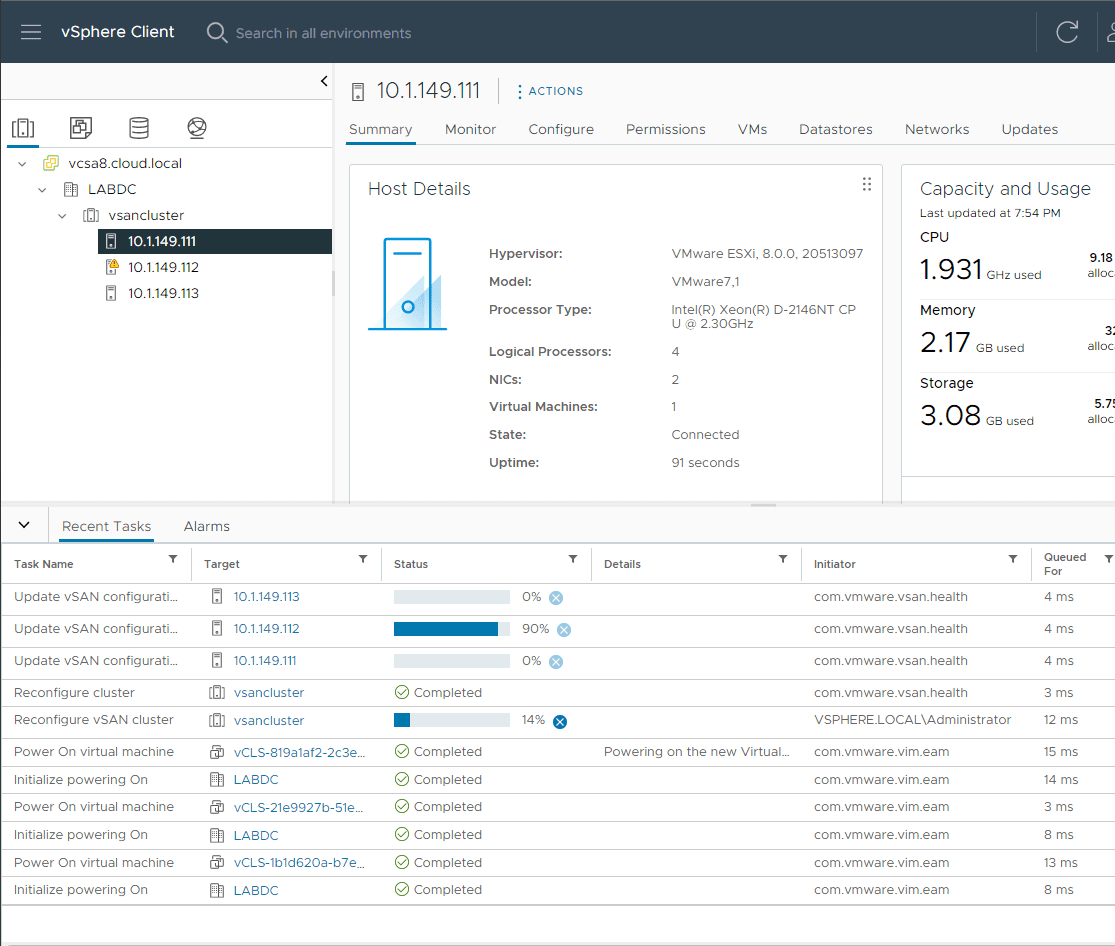
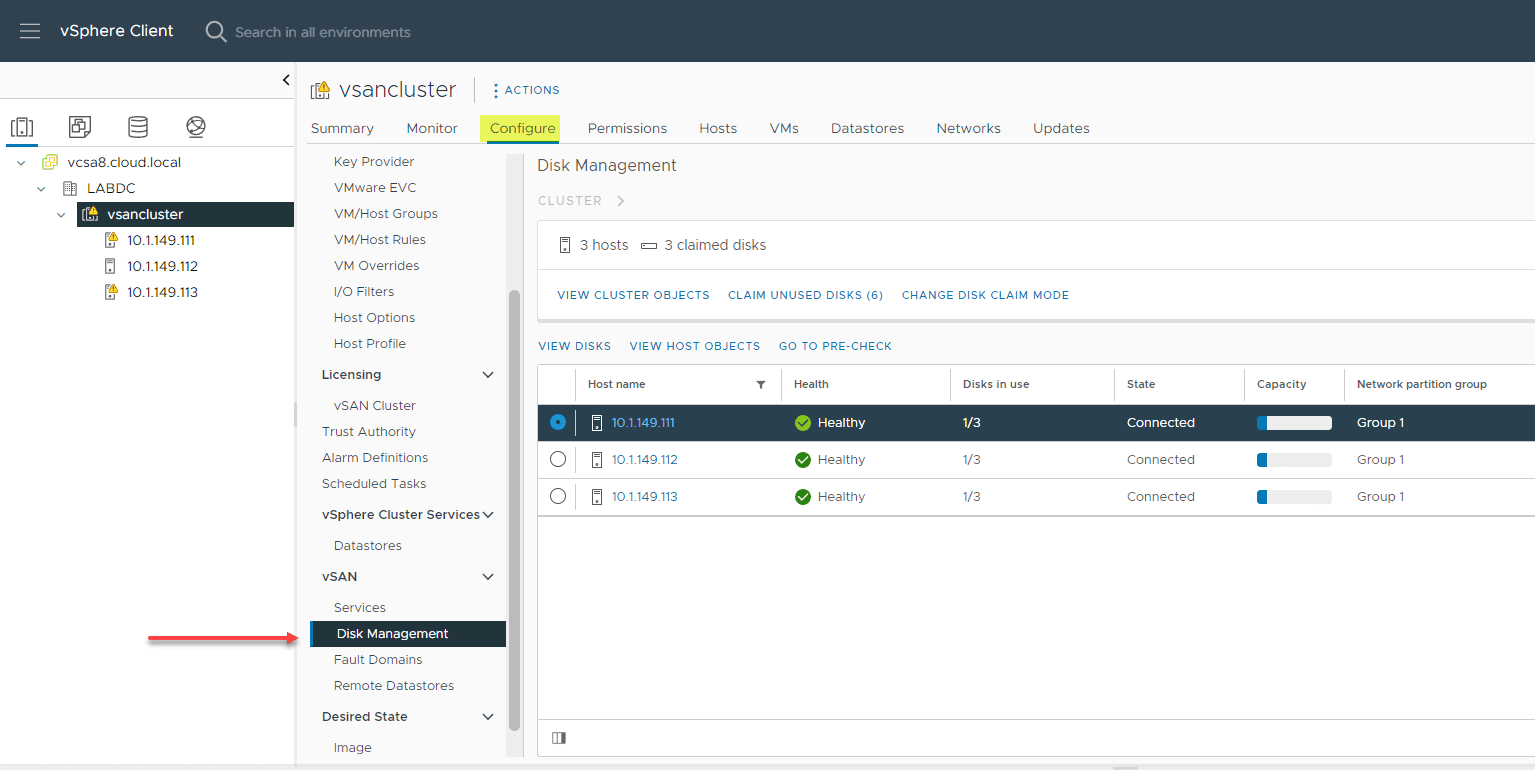



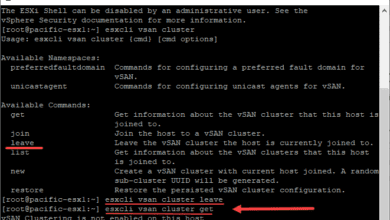
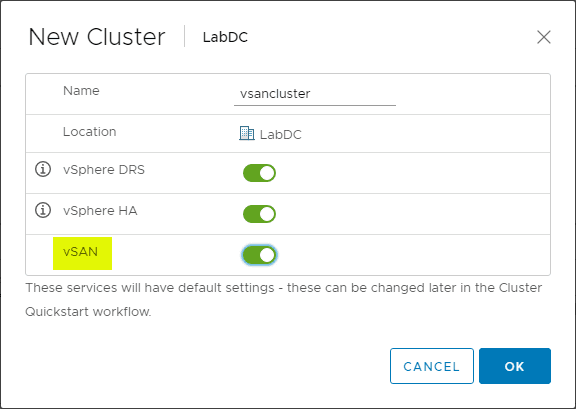
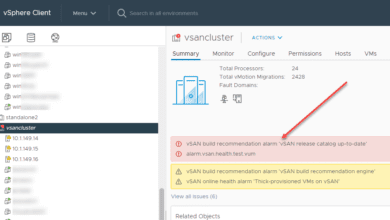
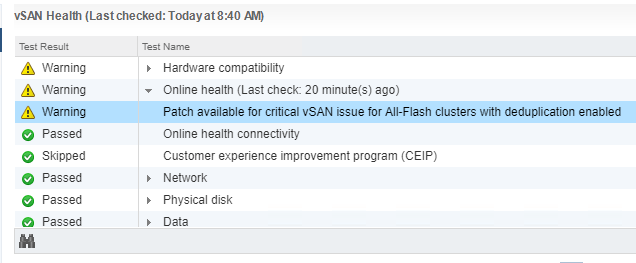





Really nice article, and all these information was answer for a lot of my questions <3